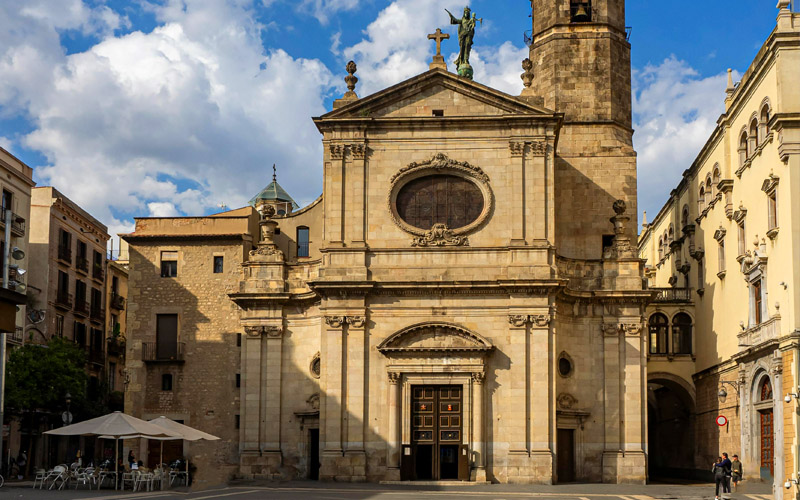I learned about the Order of the Mercedarians by accident when we were sketching the church of Sant Pere Nolasc (Peter Nolasco) and I found a poster on the church. I was puzzled by the text on the poster: 800 years of the Order of the Virgin of Mercy in the service of freedom. Not the salvation of souls, but freedom. It seemed strange to me.
I found out that freedom was mentioned in the most literal sense: Peter Nolasco (Pere Nolasc in Catalan) was the founder of the Order of the Blessed Virgin Mary of Mercy for the Redemption of the Captives, also known as the Mercedarians! And, as you can see, the order was founded around 800 years ago, in 1218.

According to legend, the Virgin appeared on the night of September 24, 1218, to Peter Nolasco with a request for the establishment of an order whose mission would be the freeing of Christian prisoners from the Moors. The idea was endorsed by King James I of Aragon, Raymond of Penyafort, and Bishop Berenguer de Palou. The bishop personally accepted the monastic vows of Peter Nolasco in the cathedral of Barcelona. To the traditional three vows: poverty, obedience, and integrity, the brothers added a fourth vow: to contribute with all means and possibilities to the release of captive Christians and, if necessary, to offer himself as a ransom. Peter Nolasco showed an example of the fulfillment of this oath by being imprisoned in Africa in 1226 instead of one of the captives. A few months later, he was redeemed by the brothers of the order.
Many temples in Barcelona and the neighborhoods are dedicated to the Virgin of Mercy, or La Mercè in Catalan. For example, in the Gothic quarter near the Old Harbor, you can find the Basilica de La Mercè (Church of Our Lady of Mercy). The author of this creation, Josep Mas i Dordal, used the remains of the former Gothic church of St. Michael for the construction of the baroque-style basilica. The dome is decorated with a statue of the Virgin Mary. This church used to be part of the Mercedarian monastery.

Another event in the history of Barcelona is associated with the name of the Virgin of Mercy: in 1687, she saved Barcelona from a locust invasion. Then the grateful inhabitants of the city decided to choose her as their protector and patroness. Barcelona already had a patroness, it was considered for several centuries before Saint Eulalia. But, after the invasion of the locust, the City Council elected La Mercè as the patron saint of the city. Since then, the Barcelona people have regarded the September rains as the tears of Saint Eulalia, who is crying out of resentment for the unfaithful citizens. Pope Pius IX consecrated the decision of the City Council two centuries later and, in 1868, officially proclaimed the Virgin of Mercy the patroness of the city.
The first Great Mercè Festival was held in September 1902. Subsequently, it turned into a grand event that is still celebrated in Barcelona. This festival is also a continuation of the old farewell to the summer holyday. The Merce Festival lasts more than a week; the most eventful days are from September 21 to 24. These days, there are rallies and dances of giants; they build towers of people. Many theatrical performances and concerts are organized on the streets. You can see a laser show on the facade of the town hall building, as well as festive fireworks. On Mercè festival days, there are organized free visits to museums, temples, and cultural complexes.
